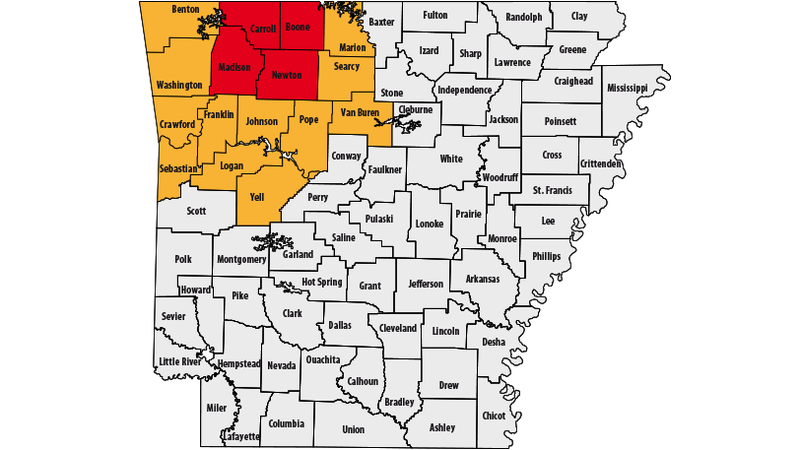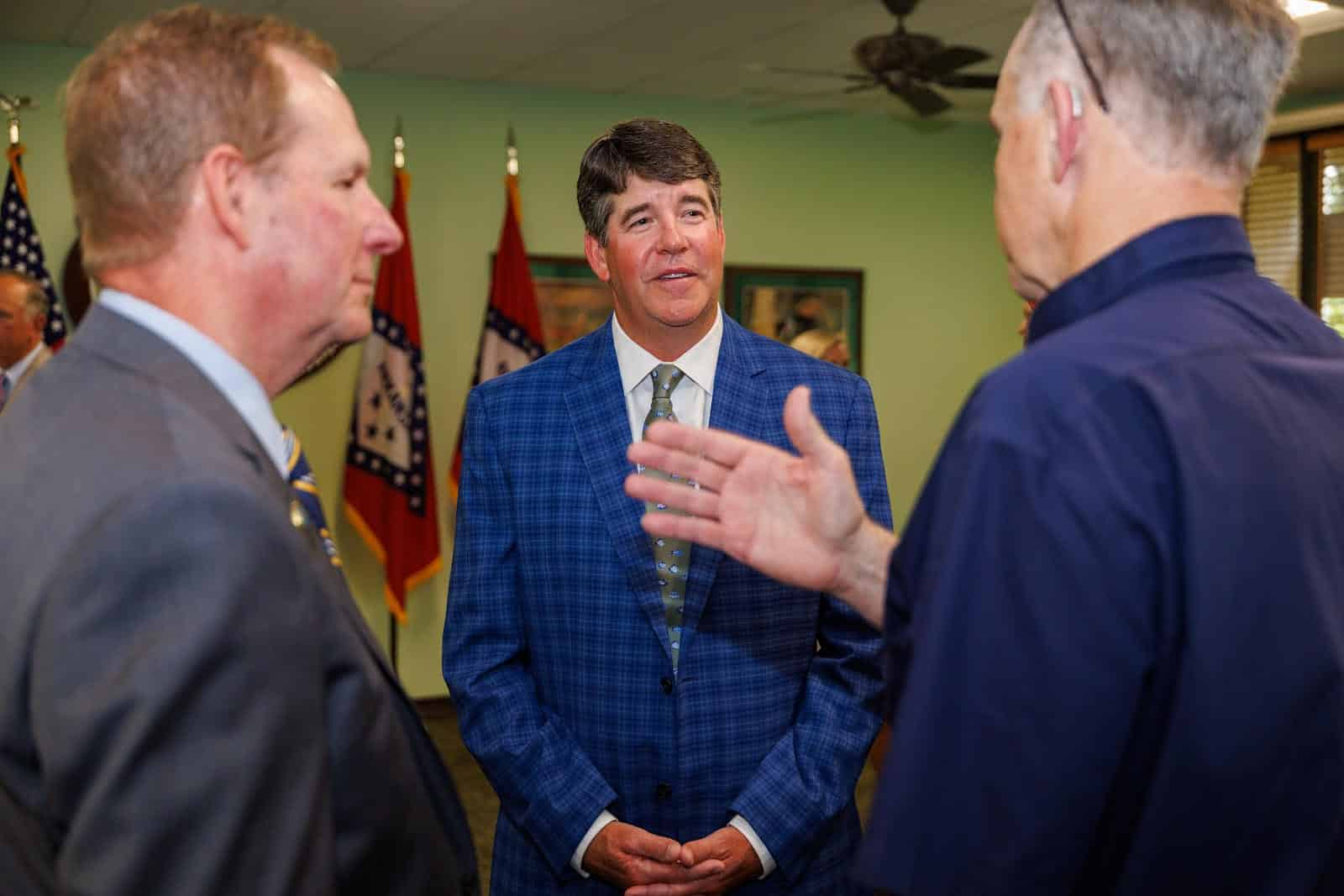Arkansas CWD management evolves
ON 07-25-2018

July 25, 2018
Randy Zellers
Assistant Chief of Communications
LITTLE ROCK – Arkansas deer hunters will have more ability to help slow the spread of chronic wasting disease this year, thanks to new regulations passed by the Arkansas Game and Fish Commission.
In response to new positive cases of CWD detected during last deer season’s sampling efforts, five counties have been added to the CWD management zone. The addition of Benton, Crawford, Franklin, Sebastian and Washington counties extends the outer boundary of the zone west to the Arkansas-Oklahoma state line.
Not all of the zone should be treated the same, however.
“The highest concentration of the disease appears to be in Boone, Carroll, Madison and Newton counties,” said Cory Gray, Chief of the AGFC’s Research, Evaluation and Compliance Division. “So we’ve established a two-tiered system to prevent movement outside of those counties as well as movement from the entire CWD zone.”
Hunters may not transport whole deer or elk carcasses from animals taken in Tier 1 of the CWD Management Zone (Boone, Carroll, Madison and Newton counties) to any county outside of that four-county tier. Materials like deboned meat, teeth, cleaned skull plates, tanned hides and taxidermy products can still be moved.
The remainder of the CWD Management Zone (Benton, Crawford, Franklin, Johnson, Logan, Marion, Pope, Sebastian, Searcy, Van Buren, Washington and Yell counties) is considered Tier 2 of the zone. Intact carcasses from deer and elk harvested in these counties may not leave the outer boundary of the CWD zone but may travel to the four counties comprising Tier 1. Low-risk materials, including deboned meat, teeth, cleaned skull plates, tanned hides and taxidermy products, can still be moved out of the CWD Management Zone to other parts of the state.
The reason for the two-tiered management approach is to help keep the area with the highest rate of CWD contained as much as possible. By preventing intact carcasses from moving outside of the highest risk area, biologists hope to slow the disease’s spread as much as possible in those areas where only one or two cases have been documented. Managing the spread and prevalence of the disease to these areas helps reduce the likelihood of the disease spreading outside of the CWD Management Zone.
“Our goals are still the same for the CWD Management Zone: maintain efforts to flat-line or decrease the percent of animals infected and minimize all possibilities of the disease spreading,” Gray said. “The more sampling we conduct, the clearer the picture becomes of where the disease is located and at what percentage of infection.”
Antler size has been a standard of success for many hunters over the years, with the motto bigger is always better. That may have been true during the years of quality deer management, but managing to slow the spread of CWD must take a different approach. Male deer have a higher prevalence of CWD than females and young bucks tend to move long distances to establish new home ranges. Therefore, protecting males from harvest can increase the spread of CWD. Antler-point restrictions have been removed within the CWD Management Zone, enabling hunters to harvest smaller bucks to help manage the spread.
“Our sampling has shown a higher prevalence rate of CWD in males versus females,” Gray said. “This is common with CWD, and to help stabilize CWD prevalence in the herd for the long term we need to devote more focus on harvest of the buck segment.”
“We realize this management strategy is a difficult trade-off for hunters who have seen the benefits of quality deer management, but we feel this is a necessary step in continuing a healthy, stable deer population for the future,” Gray said.
Other regulations targeted at reducing transmission of the disease that apply only within the CWD management zone include a ban on feeding wildlife and additional deer tags being made available to landowners within the zone who need to reduce deer density on their property.
Feeding wildlife through artificial means has the potential to increase the risk of disease transmission, as it unnaturally concentrates animals within close spaces to each other. CWD is spread through direct and indirect contact between infected deer and materials, so reducing the amount of direct exposure to these vectors can help slow transmission of the disease within a deer herd.
“We understand that people still want to bait deer for hunting, and there are exceptions for that,” Gray said. “Baiting strictly for hunting purposes is allowed in the CWD zone from September 1-December 31. We do ask hunters to consider baiting as a tool to assist in removing additional deer, but to be wise on how they place the bait. We encourage placing a limited amount of bait through spin-style or trough-style feeders and never place bait or mineral licks directly on the ground.”
Gray says food plots are always preferred over baiting whenever possible, as they offer better food quality, don’t feed other animals such as nest predators, and lessen the chance of direct contact.
“We ask hunters to continue deer hunting, but understand what is known concerning CWD. Deer hunting will continue in northwest Arkansas, deer are not going extinct, but we are asking hunters to modify some of their hunting practices,” Gray said.
Recent News

Arkansas Wildlife Weekly Fishing Report
Jul. 10, 2025

Lonoke aquaculturist named to AGFC
Jul. 10, 2025
Subscribe to Our Weekly Newsletter E-mails
Don’t miss another issue. Sign up now to receive the AGFC Wildlife Weekly Newsletter in your mailbox every Wednesday afternoon (Waterfowl Reports are published weekly during waterfowl season and periodically outside the season). Fishing Reports arrive on Thursdays. Fill in the following fields and hit submit. Thanks, and welcome!
